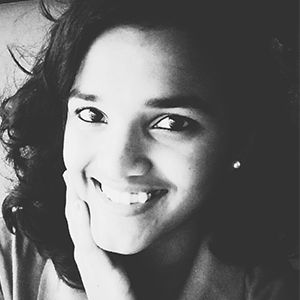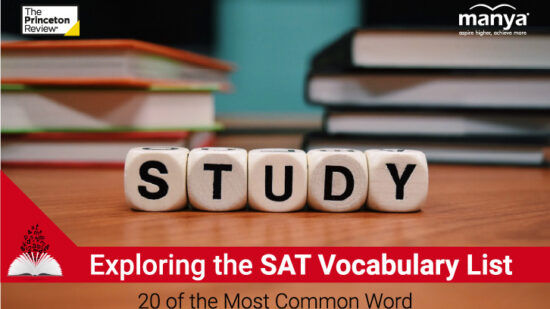
The SAT Verbal or the Reading and Writing section consisting of two modules contributes towards the 200-800 Verbal score. This section consists of short reading passages or passage pairs with about 25 to 150 words per passage. The Passages are derived from a broad range of literature that falls into the subject areas of history or social studies, literature, humanities, and science.
Each of these passages comes with one multiple-choice question per passage. These questions come from four content areas – Information and Ideas, Craft and Structure, Expression of Ideas, and Standard English Conventions. The questions are grouped together according to the skills tests and ordered from easiest to hardest in each module.
SAT Reading and Writing Section Structure
| Section | Number of questions | Number of passages | Time allotted | Scores |
| Module 1 | 25 + 2 Pretest Questions | 25 + 2 Pretest | 30 minutes | 200 to 800 |
| Module 2 | 25 + 2 Pretest Questions | 25 + 2 Pretest | 30 minutes |
Here are some types of sample questions that you would like to see in your reading and writing section of the SAT as shared by the College Board:
Domain: Information and Ideas
These questions ask what the author or the passage says. The student has to find evidence from the passage to support the answer.
Sample:
Many animals, including humans, must sleep, and sleep is known to have a role in everything from healing injuries to encoding information in long-term memory. But some scientists claim that, from an evolutionary standpoint, deep sleep for hours at a time leaves an animal so vulnerable that the known benefits of sleeping seem insufficient to explain why it became so widespread in the animal kingdom. These scientists, therefore, imply that ______
Which choice most logically completes the text?
A) it is more important to understand how widespread prolonged deep sleep is than to understand its function.
B) prolonged deep sleep is likely advantageous in ways that have yet to be discovered.
C) many traits that provide significant benefits for an animal also likely pose risks to that animal.
D) most traits perform functions that are hard to understand from an evolutionary standpoint.
| Key: B | Skill: Inferences |
Check Your Score Now with a Free Practice Test
See where you stand with our practice tests. Find the right way to improve with our strategy sessions.
-
Domain: Craft and Structure
Another subset of this question type is the Words in Context question. This tests the ability of the student to identify the contextual meaning of a word as used in the passage.
Sample
In recommending Bao Phi’s collection Sông I Sing, a librarian noted that pieces by the spoken-word poet don’t lose their ______ nature when printed: the language has the same pleasant musical quality on the page as it does when performed by Phi.
Which choice completes the text with the most logical and precise word or phrase?
A) jarring
B) scholarly
C) melodic
D) personal
| Key: C | Skill: Words in Context |
Domain: Expression of Ideas
These questions expect the students to have a good understanding of a passage’s content, tone, and purpose to improve the text from the perspective of accuracy, logic, topic development, and rhetorically impactful language use.
While researching a topic, a student has taken the following notes:
- Maika’i Tubbs is a Native Hawaiian sculptor and installation artist.
- His work has been shown in the United States, Canada, Japan, and Germany, among other places.
- Many of his sculptures feature discarded objects.
- His work Erasure (2008) includes discarded audio cassette tapes and magnets.
- His work Home Grown (2009) includes discarded pushpins, plastic plates and forks, and wood.
The student wants to emphasize a similarity between the two works. Which choice most effectively uses relevant information from the notes to accomplish this goal?
A) Erasure (2008) uses discarded objects such as audiocassette tapes and magnets; Home Grown (2009), however, includes pushpins, plastic plates and forks, and wood.
B) Like many of Tubbs’s sculptures, both Erasure and Home Grown include discarded objects: Erasure uses audio cassette tapes, and Home Grown uses plastic forks.
C) Tubbs’s work, which often features discarded objects, has been shown both within the United States and abroad.
D) Tubbs completed Erasure in 2008 and Home Grown in 2009.
| Key: B | Skill: Rhetorical Synthesis |
Domain: Standard English Conventions
The questions that fall into this domain expect the students to make sentences consistent with standard grammar, usage, and punctuation conventions.
Rabinal Achí is a precolonial Maya dance drama performed annually in Rabinal, a town in the Guatemalan highlands. Based on events that occurred when Rabinal was a city-state ruled by a king, ______ had once been an ally of the king but was later captured while leading an invading force against him.
Which choice completes the text so that it conforms to the conventions of Standard English?
A) Rabinal Achí tells the story of K’iche’ Achí, a military leader who
B) K’iche’ Achí, the military leader in the story of Rabinal Achí,
C) there was a military leader, K’iche’ Achí, who in Rabinal Achí
D) the military leader whose story is told in Rabinal Achí, K’iche’ Achí,
| Key: A | Skill : Form, Structure, and Sense |
Important Point to Note:
In the Reading and Writing Section, have a strategy to deal with the passage and the questions. Remember time is the key in this section. Learn to tackle the different types of questions.














